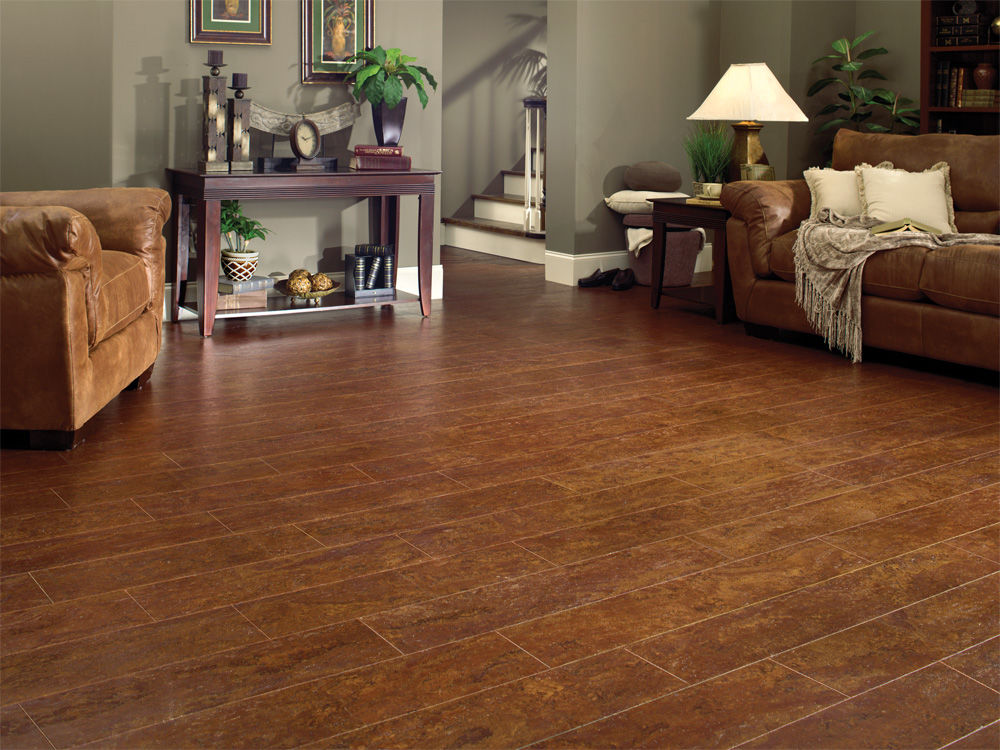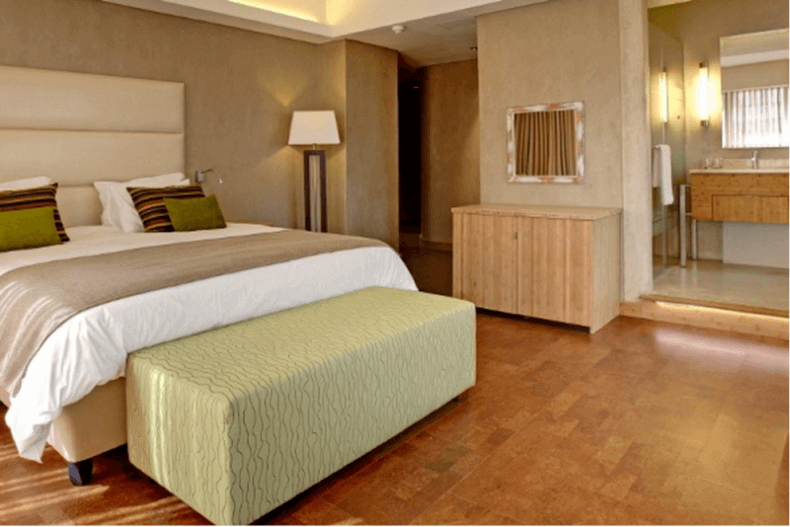Cork flooring brings unique advantages to kitchens, starting with exceptional comfort underfoot. The natural cushioning reduces fatigue during long cooking sessions, making it gentler on joints than harder surfaces like tile. Its cellular structure provides built-in insulation, keeping floors warmer in winter and reducing noise from dropped utensils. Cork’s natural elasticity allows it to bounce back from minor dents caused by heavy appliances. Environmentally conscious homeowners appreciate that it comes from renewable bark harvests without harming cork oak trees. These qualities make it a thoughtful choice for busy kitchens where comfort and sustainability matter.
Maintenance requirements present some considerations for cork floors. While pre-finished cork resists stains, it requires regular sealing to maintain water resistance in spill-prone kitchens. Minor scratches can be concealed with light sanding and fresh sealant, but heavy abuse may require professional refinishing. The soft surface shows wear patterns in high-traffic areas over time, especially under table chairs or islands. However, quality cork flooring with durable finishes can last 10-15 years with proper care. Its antimicrobial properties naturally inhibit mold and mildew growth, an advantage in humid kitchen environments where moisture accumulates.
Installation factors significantly impact cork’s performance. Floating cork planks simplify DIY installation with click-lock systems that accommodate minor subfloor imperfections. Glue-down tiles provide greater stability for heavy kitchen appliances but require more skill to install properly. Cork expands and contracts with humidity changes, necessitating expansion gaps around perimeter walls. Professional installation ensures proper sealing of edges and seams—critical areas where water infiltration could cause damage. Unlike some flooring types, cork can be installed over radiant heating systems, adding comfort in colder climates without compromising the material’s integrity.
Cost comparisons reveal cork’s middle-ground position among kitchen flooring options. Prices typically fall between budget vinyl and premium hardwood, making it accessible for mid-range kitchen remodels. While the upfront cost exceeds some materials, its insulation properties may reduce heating bills over time. The need for periodic resealing adds to long-term maintenance costs that harder surfaces don’t require. However, cork’s durability-to-price ratio compares favorably when considering its comfort benefits and acoustic advantages in open-concept homes where kitchen noise carries.
Aesthetic flexibility makes cork adaptable to various kitchen styles. Modern manufacturing techniques produce cork in colors ranging from natural honey tones to contemporary grays, with options mimicking wood or stone textures. Its uniform appearance suits minimalist designs, while varied grain patterns add organic character to rustic kitchens. Cork’s matte finish provides subtle visual warmth that complements both traditional cabinetry and sleek modern designs. Unlike cold tile, it creates an inviting atmosphere where family naturally gathers. While not indestructible, proper product selection and maintenance make cork a viable, comfortable option for kitchens where comfort and eco-friendliness take priority over absolute durability.
Water resistance capabilities vary among cork products. Newer waterproof cork options feature enhanced sealing throughout the plank, not just on the surface. Traditional cork requires immediate spill cleanup to prevent moisture penetration at seams. Standing water can damage unsealed edges over time. In wet areas like near sinks, area rugs or mats provide extra protection. These considerations make proper product selection crucial for kitchens, where liquid exposure is inevitable. High-quality, properly installed cork performs well in kitchen environments when maintained correctly.
Health benefits distinguish cork from other flooring materials. Its natural hypoallergenic properties resist dust mites and allergens that accumulate in carpets. The slight give underfoot reduces impact on knees and backs during food preparation. Cork’s sound-absorbing qualities minimize noise transfer to rooms below—valuable in multi-level homes. Some studies suggest cork may improve indoor air quality by trapping certain pollutants. These features make it particularly appealing for households with children, elderly members, or allergy sufferers who spend significant time in the kitchen.
Environmental advantages contribute to cork’s appeal. The harvesting process sustains cork oak forests, which are important ecosystems. Cork production generates minimal waste, with byproducts used for insulation and other applications. As a natural material, it avoids the off-gassing associated with some synthetic floors. The material’s biodegradability appeals to eco-conscious homeowners. These sustainable credentials align with green building standards and environmentally responsible design practices gaining popularity in modern kitchens.
Potential drawbacks warrant consideration before choosing cork. Heavy appliances can leave permanent indentations without proper protective pads. Sharp objects like dropped knives may puncture the surface. Direct sunlight can cause fading over time, requiring area rugs near windows. The softness that provides comfort also means it won’t feel as substantial underfoot as stone or tile. These limitations may deter some homeowners, though many find the trade-offs acceptable for cork’s unique benefits.
Comparative alternatives help contextualize cork’s position. Luxury vinyl plank offers greater water resistance but lacks cork’s natural warmth and eco-profile. Hardwood provides similar visual appeal but with higher cost and less comfort underfoot. Tile surpasses cork in durability but can feel uncomfortably hard during long cooking sessions. Bamboo provides comparable sustainability but with a harder surface. These comparisons help homeowners determine if cork’s particular blend of characteristics suits their kitchen’s needs and their personal priorities for functionality and style.
Long-term performance depends on proper care and realistic expectations. Daily sweeping prevents abrasive dirt from scratching the finish. Immediate wipe-ups of spills maintain water resistance. Reapplying sealant every 2-3 years preserves protection in high-traffic areas. Avoiding excessive moisture and using protective pads under appliances extends the floor’s lifespan. With appropriate maintenance, cork flooring can maintain its functionality and appeal for decades, offering a unique combination of comfort, sustainability, and style that distinguishes it from other kitchen flooring options. Its ability to create a warm, quiet, and eco-friendly kitchen environment makes it a compelling choice despite requiring more care than some alternatives.
Pros And Cons Of Cork Flooring Cork flooring kitchen, Basement flooring options, Cork flooring
Cork Flooring Pros and Cons
Cork Flooring—Advantages and Disadvantages
All About Hardwood Floors Easy kitchen upgrade, Cork flooring, Kitchen flooring
Ultimate Cork Flooring Buying Guide
Related Posts:


/182177160-56a2fd883df78cf7727b6d11.jpg)


:max_bytes(150000):strip_icc()/laminate-flooring-pros-and-cons-1821644-01.3-HERO-695b075308754c46aff7b59115eb2cee.jpg)
/9-56a2fc2b3df78cf7727b6831.jpg)

